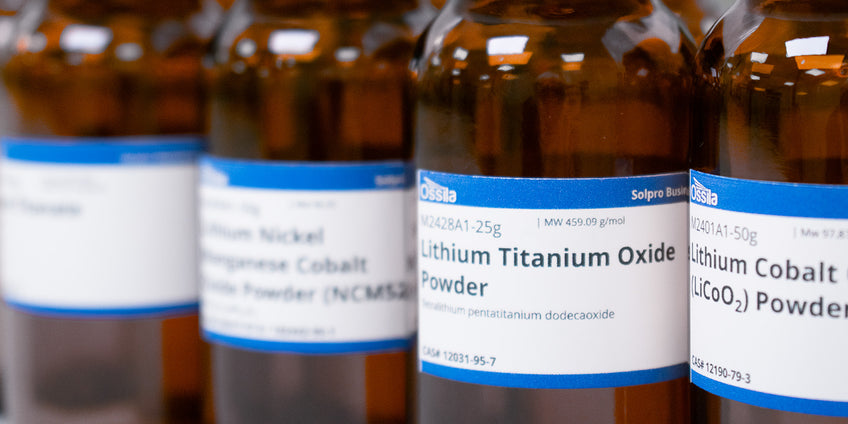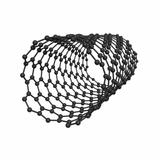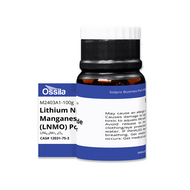Battery Materials
As the demand for clean and renewable energy sources continues to rise, there is a growing need to invest in electrical storage systems. Renewable energy needs to be stored and distributed according to energy demand. Battery materials research is crucial for a sustainable future. Batteries will play a role in:
Lithium-ion batteries (LIBs) have quickly become the ‘battery of choice’. They offer a lightweight cathode material and high charging efficiency, making them effective solutions for hybrid electric (HEV) and all-electric vehicles (EV). Our selection of lithium-ion battery materials includes the six main types: NMC, NCA, NCM, LFP, LMO, LCO, as well as the newer LNMO.
Sodium-ion batteries (SIBs) are emerging as a next-generation battery technology. Prussian blue analogues and Prussian white are among the key materials driving progress toward safer, more sustainable, and cost-effective energy storage solutions.
Our anode active materials include lithium titanate, carbon black and graphite that can be coated on copper foils. Other carbon-based graphene materials and carbon nanotubes are known to improve conductivity. Such materials are also being used in ground-breaking solid-state battery research. Explore our range to find the materials that suit your research.
Jump to: Browse Collections | Browse Battery Materials | Choose the Right Battery Material | Resources and Support
Battery Materials Collections
Explore the range of high-purity cathode materials designed for high-capacity, high-voltage batteries to maximize energy density.
Browse All Battery Materials
Related categories: cathode active materials, anode active materials, inorganic electronic materials, metal oxides, sodium-ion battery materials
Filter by price change:
Filter by type:
Filter by battery type:
Filter by electrode type:
Page 1 of 2
Choose the Right Battery Materials

It is important to consider the application of the battery when deciding on the right material for your research. Each material has a different chemical composition and structure which is designed to benefit the different properties of a battery. These properties can range from increased ion mobility to allow for faster charging/discharging, to increased chemical stability to enhance cycle life. We have a range of battery materials for a wide range of research applications including HEVs, EVs, and grid storage.
Battery Materials by Properties
| Battery Material | Voltage (V) | Specific Capacity (mAh/g) | Cycle Life |
|---|---|---|---|
| NCA | 4.7 V | 194 | 500 Cycles |
| LNMO | 4.7 V |
146.8 (Theoretical) 103 (Experimental) |
92% retention after 1000 cycles |
| NCM523 | 4.3 V | 154 | 76.9% retention after 400 cycles at 3C |
| LiCoO2 | 4.0 – 4.2 V |
274 (Theoretical) 165 (Experimental) |
500 – 1000 Cycles |
| LMO | 4.0 V | 105 | 300 – 700 Cycles |
| NMC811 | 3.8 V | 200 | 1000 – 2000 Cycles |
| LiFePO4 | 3.2 V | 155.5 | ~ 1500 Cycles |
Battery Materials by Application
| Hybrid Electric and Electric Vehicles | Energy Storage and Renewable Energy | Consumer Electronics | Power Tools | |
|---|---|---|---|---|
Resources and Support
Power density vs energy density is an important consideration when it comes to battery science. Batteries that have high energy density, (can store a lot of energy) may not be able to deliver that energy quickly. Conversely batteries with high power density (can deliver a lot of power) may not be able to deliver that energy for a long period of time.
Learn more...Lithium plating is a mechanism of degradation in lithium-ion batteries (LIBs). It describes the accumulation of metallic lithium on the surface of the anode (usually graphite powder). Lithium ions gather at the anode surface and form metallic deposits.
Learn more...A solid electrolyte interphase (SEI) forms on the negative electrode in lithium-ion batteries (LIBs) due to the decomposition of electrolyte. The decomposition by-products build up on the surface of the anode and form an independent phase of material, different to the electrode and electrolyte.
Read more... What is a Battery C-Rate?
What is a Battery C-Rate?
C-rate refers to the rate at which a battery charges or discharges relative to its maximum capacity. In other words, the speed at which delithiation and lithiation occurs in a lithium-ion battery. The higher the C-rate the faster charging or discharging occurs.
Read more... Graphene Battery vs Lithium-Ion Battery
Graphene Battery vs Lithium-Ion Battery
This page discusses the pros and cons of Lithium-ion (Li-ion) batteries and graphene batteries and the future outlook for battery research.
Read more...Lithium-ion (Li-ion) batteries can catch fire due to a process known as thermal runaway, which is triggered by various factors and involves a series of heat-releasing reactions.
Learn more...The state of charge (SoC) of a battery is defined as the ratio of remaining charge in the battery compared to the maximum charge capacity of the battery. It indicates how much energy remains in the battery and when it will need recharging.
Learn more...Internal resistance of a battery is one indicator of a battery’s current-carrying capacity. There is an inverse relationship between the two parameters.
Learn more...New Battery Materials
 What is a Carbon Nanotube Battery?
What is a Carbon Nanotube Battery?
Carbon nanotubes (CNTs), such as single-walled carbon nanotubes (SWCNT), have been tipped as one of the most exciting nanomaterials in the development of battery technology. The key properties of CNTs that make them ideal candidates as battery components is their high electron conductivity, high strength and lightweight nature.
Learn more... Graphene Batteries
Graphene Batteries
Graphene batteries are advanced energy storage devices. Graphene materials are two-dimensional and are typically made solely of carbon.
Read more...Lithium-polymer (LiPo) batteries are a type of lithium-ion battery technology that uses polymer electrolytes. This differs from standard lithium-ion batteries which use a solvent based electrolyte. Polymer electrolytes used are highly ionically conductive and form lithium-ion conduction channels.
Learn more...Solid-state batteries (SSBs) differ from conventional lithium-ion batteries (LIBs) in terms of both their components and fundamental design features. Instead of a liquid electrolyte, they use a solid electrolyte to conduct lithium ions between electrodes.
Learn more...A ternary lithium battery is a type of lithium-ion battery (LIB) that has a cathode composed of three different metals. The metals are nickel (Ni), cobalt (Co), manganese (Mn) or aluminium (Al).
Read more...








































